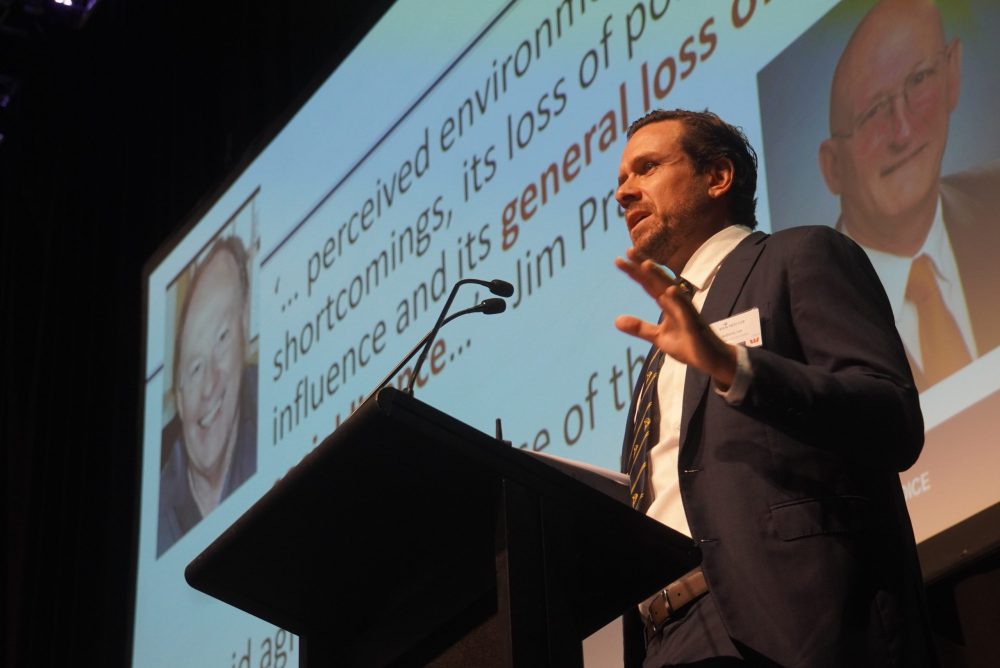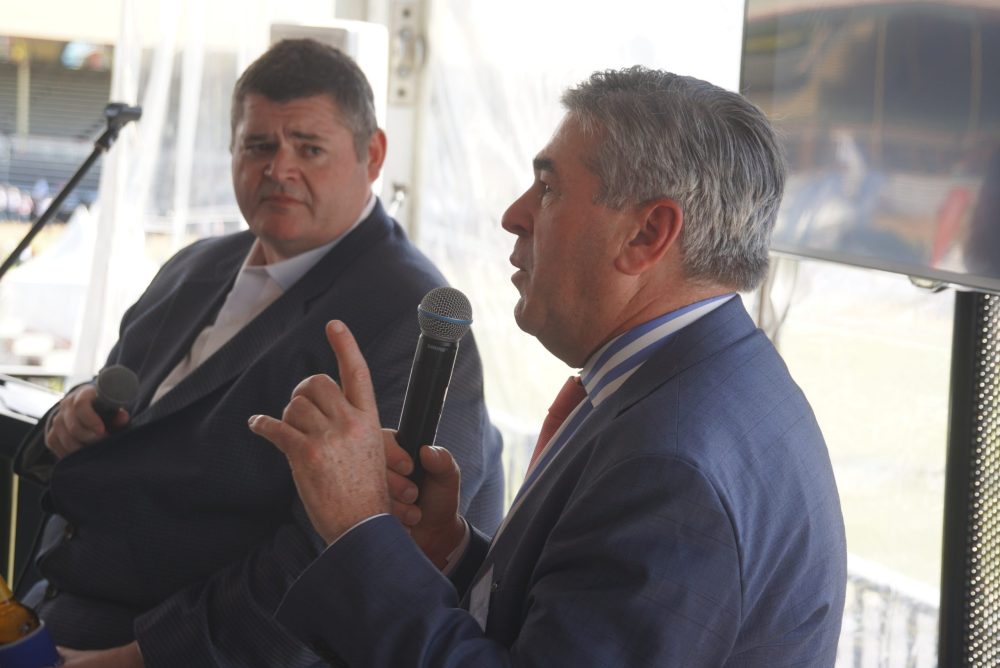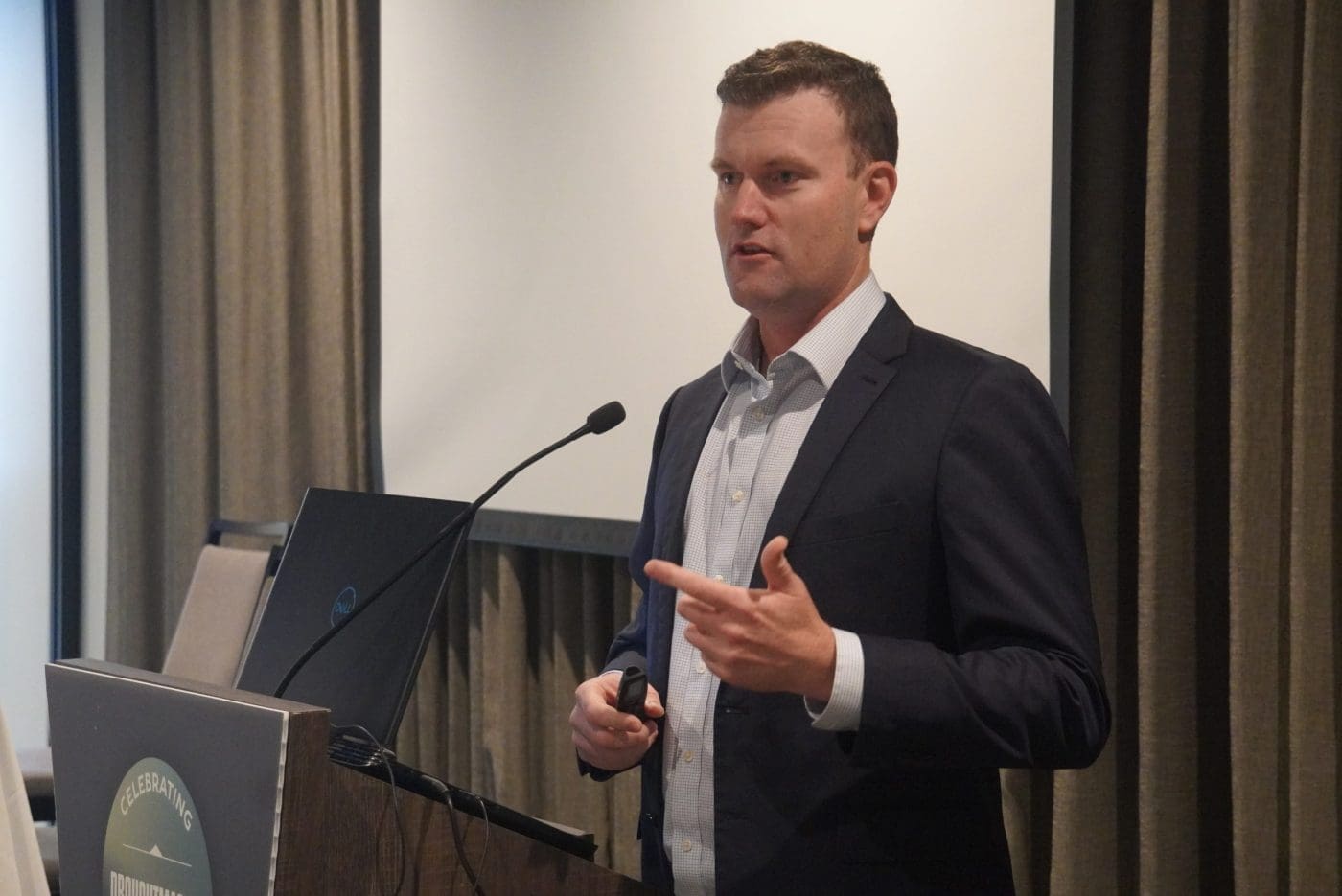THE continuing evolution of the carbon market in the beef industry and the challenges it faces were popular topics for discussion during events held as part of Brisbane’s Ekka last week.
Uncertainty over regulation and assessment processes was raised by several industry stakeholders speaking at Ekka events.

Anthony Lee
Asked during the Queensland Rural Press Club breakfast on Thursday about his company’s approach to carbon opportunities, Australian Country Choice chief executive Anthony Lee said the beef industry was now well past sticking its head in the sand over carbon – the freight train was coming.
Today ACC’s operations cover more than 1.5 million hectares and 300,000 cattle on 42 properties and three feedlots across Queensland.
“The way I look at it we are in a unique position as landholders to actually be able to benefit from the carbon opportunity, and create win-win situations. Our business has put on a full-time resources officer, and are going after it,” Mr Lee told the gathering.
“The concern I have is that the methods for assessment are not clear, and government has a role to play in actually clarifying how it all works. There’s still a lot of uncertainty about what it all means for a producer’s long-term future, what it means for evaluations and the like.
“I think that needs to be resolved first. But once that’s done, for the people who have land, there is huge opportunity, not only to reduce our footprint (most other industries cannot – they have to go and buy credits), while we can actually go and do it through our own means.”
“And on top of that it is an alternative revenue stream. That’s important in a sector like agriculture, which inevitably has those fluctuations.”
But it’s got to work hand in-hand. In my view it cannot be something where country is simply locked up and walked-away from (in a grazing sense). We have to come up with smart methods that allows us to manage both.”
$1 billion in carbon-led property investment in play in the north
There is more than $1 billion in investment with a strong carbon focus currently in play in the northern beef industry, stakeholders attending another Ekka function heard last Thursday.
“The absolute, key driver in those deals, if they all go through, is carbon,” LAWD senior director Danny Thomas told his company’s Ekka gathering.
“I think we are seeing a big wave of alternative investment in agriculture, particularly out of the US, that is really targeting into that. There may have been some legislative changes to try to temper some of that, but in these deals, the carbon and the cattle are going to co-exist. This is not about taking cattle off the table, in the pursuit of carbon.”
“We’re in the hottest rural land market since the 1950s, and carbon is contributing to that,” LAWD senior director Danny Thomas, told his company’s Ekka gathering.
“We’re meant to be the experts, but I continue to be surprised about who comes for what assets, at what values. Even through all of the turmoil and uncertainty we are seeing through FMD, we’re in the midst of another step-change in value – and its upwards.
“There are going to be some big deals completed soon through regions like the New England, and new deals in the Northern Territory and Western Australia that are going to knock everyone’s sock off. So strap yourself in.
“Commodity prices are still relatively robust, and we are in a continuing wet season phase. All of that is going to drive positivity.
Family enterprises that had dramatically reduce debt over the past five year cycle in beef prices were now in the market for properties $5-$20 million in value, which was once ‘no-man’s land’ between family scale and corporate owners.
“We think the market has a fair way to go yet.”

Danny Thomas and John McKillop during LAWD’s Ekka function last week in Brisbane
Red Meat Advisory Council chair John McKillop told the LAWD Ekka function that sovereign risk – in terms of a government changing its mind – was just one of the many unknowns that currently existed in the carbon space.
The broader Hancock parent business was heavily weighted towards mining, which had to offset its carbon footprint. The company’s ag division (Hancock Pastoral, and a majority stake in Kidman -controlling more than 20 properties covering some six million hectares, managed by Mr McKillop) were being seen as a potential contributor to that offset.
“The problem at this point is that there are just so many unknowns,” Mr McKillop said.
“There is this range of issues out there, that just need to be settled. We (landholders) need to understand exactly what we can do, and we don’t need that sovereign risk of a government changing its mind, part-way through a course, and de-valuing carbon ACCUs overnight, because of one piece of legislation or regulation.”
Mr McKillop said having had meetings in Canberra recently with Chris Bowen’s advisor recently – a Queensland cattle producer from near Beaudesert – she was all across the methane issue, and the 12-year carbon cycle out of methane, as opposed to the 1000 year carbon cycle out of fossil fuels.
“It gave me hope that the Labor Government will in fact recognise the difference. But we recognise the danger there, Labour does have a climate change mandate, with the Greens right up behind them in Canberra.
“I’ve had a lot of interaction from the agriculture minister, he is really engaging and engaged, on FMD, methane and carbon issues. We think they will recognise ag’s contribution in what we’ve done so far, and not ask us to double-dip.”
Productivity-led approach to carbon
MLA general manager for research, development and adoption, Michael Crowley, told Friday’s sixtieth anniversary Droughtmaster conference that carbon storage and emissions avoidance were the two key pillars in achieving carbon neutrality.

Michael Crowley
“But we are also taking the approach – and I have been drilling this into my team – that we can be productivity-led. This is one of the very few areas that our industry can drive production, because we need to grow the herd and flock, and produce more red meat to feed the world.
“We can meet the demand, but still do it in a way that helps us achieve a net zero carbon position (MLA’s CN30 objective, by 2030).
“Because grazing systems can sequester carbon, we can reduce the emissions intensity per kilo of production through more legumes in the pasture mix, but the legumes will also sequester carbon at a faster rate, being deep-rooted perennials.
So we can measure rates of carbon sequestration, and also have emerging technologies like feed additives (asparagopsis seaweed compounds, and Bovaer (3NOP) currently being commercialised.
Both are being tested in large-scale feedlot trials, and various delivery agents including lick blocks, pellets, water medication and slow-release bolus technologies are also under study for delivery of methane-inhibiting agents in paddock environments and extensive systems outside the feedlot.
In separate genetic work, progress was being made in developing Estimated Breeding Values under BreedPlan for methane emissions.
“In many cases, producers may not need to change their practises that much to achieve it,” Mr Crowley said.
“If producers are already looking after better pastures, better soil, balance of tree and grass cover, more productive animals, start adopting some of the new feed additive technologies, and start buying bulls genetically-selected for lower methane emissions, we can reduce emissions in extensive systems.”
“All of these things are additive, and we don’t need everyone (all producers) to become carbon neutral to achieve carbon neutrality, as an industry.
“That’s because there are going to be enough livestock managers producing excess carbon, that we are going to be in a net zero position. All this gives me confidence that we, as an industry can get there – but we have a lot of work to do, and we won’t be able to do it alone.”
